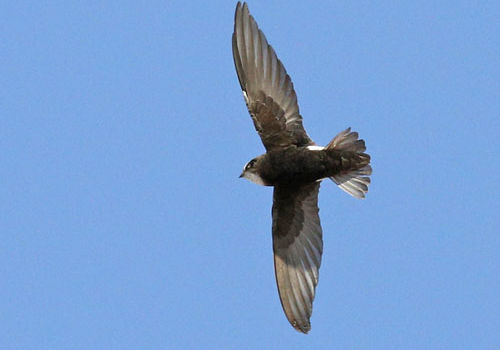
Little swift
Apus affinisLittle swift
Introduction: Little swifts (Apus affinis) inhabit built up areas and around gorges, cliffs and rocky crags. They can be observed in groups of up to 200, often with other species of swifts.
Distribution: Throughout Namibia but absent from southern Namib Desert. Etosha National Park, Epupa Falls, Fish River Canyon, Orange River, Kalahari Desert, Damaraland and northern Namib Desert coastal regions.
Diet: Forages over water, grassland and shrubland for damselflies, dragonflies, flies, beetles, mosquitos, wasps, ants, butterflies, moths and spiders. Drinks water by skimming the water surface, wings held high.
Description:Affinis is Latin for neighbouring, referring to their habit of breeding on eaves of buildings, water towers and grain silos, all features associated with being close man.
Breeding: Between 1 and 3 eggs are laid between August and April at 1 to 3 day intervals with an incubation period of 22 days. Nests are an untidy closed bowl made from grass and feathers and lined with feathers.
Size: 13cm.
Weight: 25g.


.png?width=82&height=85&name=Navigate%20Namibia-03%20(1).png)